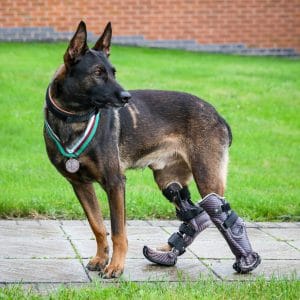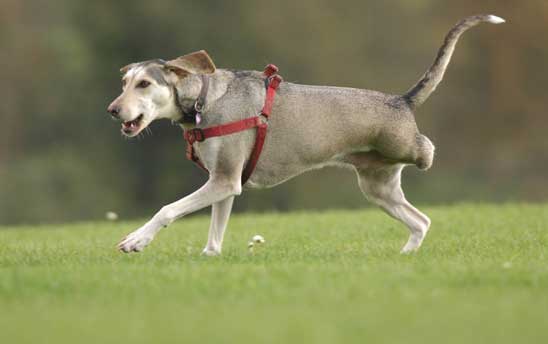Limb Amputation in Dogs

It is scary to think about having limb amputation for your four-legged fellows. This is because; they are going to live with only three legs that may hinder their performance. Frankly, limb amputation for the dog having a damaged leg does much better to enhance the quality of life instead.
Limb amputation will provide relief from the severe pain and reduce the chances of infection spreading. Likewise, the dogs having limb amputation can better enjoy their lives than with the painful limb.
What is there need for limb amputation in some dogs?
Sometimes, due to the presence of underlying disease or cancer, the dog’s limb gets severe inflammation. This inflammation leads to the developing purification and degeneration of tissue mass. Moreover, dogs are also prone to the cancer of limb bones, Osteosarcoma, which causes bone deterioration.
In addition, the development of cancers gets down to impart tremendous pain to dogs that greatly affects their movement. Multiple fractures due to severe trauma exaggerate the condition, and thus the dog becomes helpless. The only option in this situation is to have limb amputation of your dog.
Some diseases also cause the atrophy of the limb’s muscles and make it worthless. All these situations need surgical intervention to remove the trashy limb to let your dog return to normal life.
 How do three limbs affect the quality of your dog’s life?
How do three limbs affect the quality of your dog’s life?
According to veterinarians, limb amputation ensures a better quality of life for dogs with a trashy and painful limb. In certain cases, dogs automatically learn to shift their body weight on the three legs due to the feeling of pain or complete loss of sensation in the affected limb.
Limb amputation is necessary to root out the source of pain and uncomforting in dogs. Once the dogs cannot feel the pain, their quality of life enhances automatically. Unfortunately, there are several misconceptions whose consequences make the dogs suffer a painful life.
How does one can compare the recovery of limb amputation between dogs and humans?
Unlike humans, dogs have four legs that make them adapt to normal life more easily than humans. The difference in the anatomy of humans that have only two legs and after limb amputation only left with one leg makes them less adaptive. On the contrary, dogs can do better even with three legs after having limb amputation.
Dogs are at home to redistribute their weight to the remaining three limbs and return to normal life easily. On the other hand, in addition to leaving with a single leg to not impart a normal movement to humans, there are psychological factors. These factors hinder their recovery from surgical limb amputation.
Partial limb amputation in dogs is rare and requires veterinary prosthetics experts to handle the situation. In humans, partial limb amputation is a routine surgical procedure.
Are there size and age-related factors that make the dogs better candidates for limb amputation?
Yes, the age and size of the dog have some association regarding the recovery after limb amputation. Younger dogs are more likely to heal from surgical incisions within a short period. Moreover, the small breeds of dogs like Chihuahua and Pug can adjust the post-surgical situation due to their small sizes.
In addition, dogs having arthritis and neurological problems are at the risk of getting poor recovery.
Is there any difference in recovery from the front or hind limb amputation?
Almost 60% of the bodyweight of dogs is on front limbs and rest on the hind limbs. That’s why dogs having hind limb amputation are likely to get speedy recovery and adaptation to weight shifting. On the other hand, the recovery from front limb amputation takes some extra time but ensures resuming walk without aide.
What could be the expected outcomes and recovery time from limb amputation in dogs?
Vet surgeons think it better to remove the whole limb even if the injury is lower down. This practice reduces the chances of dissemination of infection to other body parts. Moreover, the remaining limb may inflict hindrance during walking later on.
The duration for post-operative monitoring for limb amputation is about 24 hours. They keep close attention to check for any post-operative complications like infections and fluid build-up in this duration. Normally, the dog starts to roam about the very next day after the surgery.
What should one need to do for the post-operative dog?
First of all, manage a smooth and soft floor for your dog to walk around. The carpeted floors are preferable to the tile floors. Avoid letting your dog walk on slippery floors, which may cause them to have a serious injury on slipping.
Mange a diet plan for your dog and don’t allow him/her to gain weight after limb amputation, and consider visiting your vet.


 How do three limbs affect the quality of your dog’s life?
How do three limbs affect the quality of your dog’s life?
